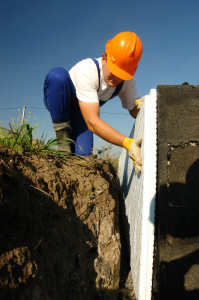If you are hearing loud cold weather cracks and booming noises in your home in the winter, you are not alone! Many people during the winter season on 2013-2014 experienced these weird shifting noises that have many home owners worried. Even to the point of the home owner calling the police, thinking there are people in the home. This is something that is not usual, so a worry that thieves have entered the home is very common. The noises sound similar to a ghost banging on the walls, like in a scary movie. Hearing this loud boom noise, and being uncertain what could be creating this noise, many people are worried that the dead have invaded the house.
Cold Weather Cracks the Air and the Structure at the Same Moment
Whenever you have below zero temperatures, the insulation in your home can create a benefit for you. Not only will your buffer between the walls in your home be better and produce a good energy efficiency effect, insulation will ensure you have less Kinetic movement within your home’s structure. Water and ice on the outside of the house gets colder with each dropping temperature degree, and the ice shrinks with the pressure of the drop of temperature. What thermodynamics calls kinetic energy, or the internal energy example, water has more of a physical bond that needs a larger physical energy to match that to metals, solid molecules or even viscous membranes like glass. This means, if you heat metal and water to one more degree, or drop one more degree, there is more physical demand on the molecules in water to achieve the temperature change than in metal. In other words, it takes more internal energy, or kinetic bond energy, to achieve the same outcome in change in temperature. This is why, ice is formed at 32 degrees Fahrenheit, and at that same temperature, a metal like copper, iron or steel, sees no change to bond at the molecular level.
The release of the water from the metal, wood, shingles or other stronger kinetic element will create this sound dispersion; or loud cold weather cracks in the air. It is something that occurs in sharp temperature changes, or even in very cold changes where the stronger structural element, like a roof shingle, can see a loss of structural kinetic energy very quickly. This change, like a ghost like boom, is called cold weather cracks in Wisconsin, Winter Boom in Minnesota, and often an uncertain robber in many parts of the midwest. With the change in temperatures, you can expect this in your home.
Insulate your Roof to Protect from Cold Weather Cracks
Not only does this effect produce noise, but sometimes, it can create a crack in the surface of your home. The cold weather cracks the roof shingle, the siding of the home, or even the concrete of the basement. The amount of damage will depend on how much water is outside of your home, and is able to contrast by a simple degree or two from the outside or exterior of your home. To keep your home safer in the future, it is important to consider insulation as a buffer between the air temperature surrounding your home, and the internal temperatures of your home.
Why Cold Weather Cracks are So Loud
Sounding like a menacing ghost who wants in, the cold weather cracks are very loud as they are a twisting or a contraction of solid molecular bonds releasing large portion of kinetic energy. Science is at the heart of this reasoning, not robbers, ghosts or failing roofs. The main thing you can do to prevent the cold weather cracks, is to insulate your home, at the roof line, the foundation and at the walls. Spray foam is showing signs of increasing positive results in this area, and reduces the contraction of the structures from the cold weather changes.
Cold weather cracks will be a thing of the past, and may explain why older homes seem to creak and groan in the night.

